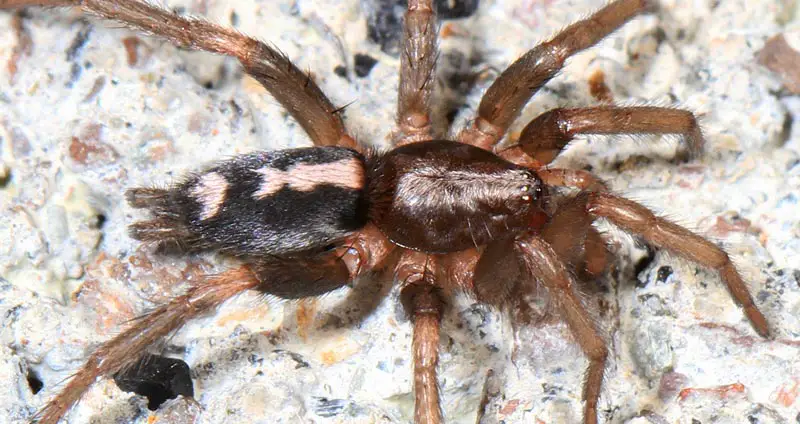The Parson Spider, or Herpyllus ecclesiasticus, is a common “nuisance” spider that commonly pops up in houses around North America.
It’s a member of the Gnaphosidae family of spiders, commonly called ground spiders.
This spider is small in size, non-threatening, and typically stays out of the way while going about its own business.
Table of Contents
At A Glance
| Scientific Name | Herpyllus ecclesiasticus |
| Distribution | North America (East of the Rocky Mountains) and Canada |
| Habitat | Throughout homes, and under rocks or logs |
| Size | 1/5″ to 1/3″ |
| Bite | Non-threatening |
| Lifespan | 1-2 years |
Eastern vs. Western Parson Spider
Interestingly, there isn’t just one single Parson Spider. In reality, there are two spiders that go by this name! Those are the Eastern and Western Parson Spiders.
While this post specifically focuses on the Eastern Parson Spider, the Western Parson Spider (Herpyllus propinquus) is very similar in appearance and behavior.
In fact, the only way that you’re able to tell them apart (aside from where they live) is by looking very closely at the slight differences in their reproductive organs.
Geographically, the Eastern Parson Spider lives to the east of the Continental Divide, while the Western cousin, as you can imagine, lives to the west of that divide.
As stated, visually these spiders can’t be told apart with the naked eye, and their behaviors are essentially the same as well.
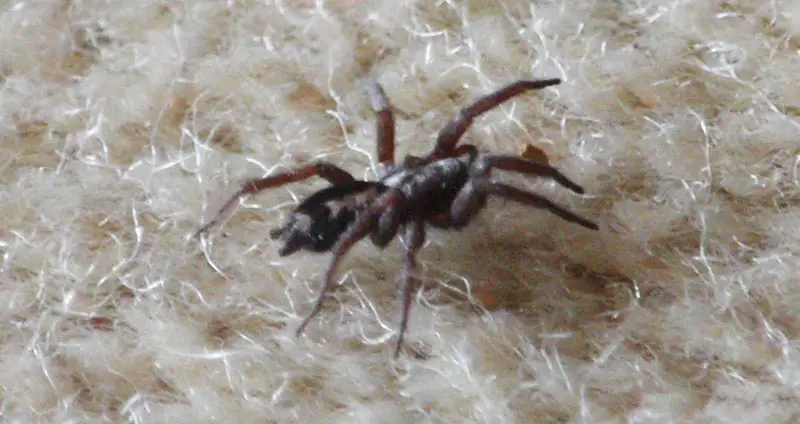
Parson Spider Appearance
This is a decently small spider species, with a body length of only 1/3″ – 1/2″ for adult females and about 1/5″ for males.
This spider is identified by its brownish-black body, gray abdomen, brown legs and pedipalps, and a whitish-pink mark down the middle of its carapace and abdomen.
This distinctive, easily-recognizable stripe is actually what gave this spider its name! That dorsal pattern resembles a clerical collar, or cravat, that was worn by a parson or minister in the 1800’s.
Additionally, this spider is covered in a layer of fine hairs that are black on the carapace and gray on the abdomen.
Note that colors of this spider can vary slightly depending on the individual spider and the lighting that it’s in. They range from light brown with prominent patterns to a rich chocolate brown with muted patterns.
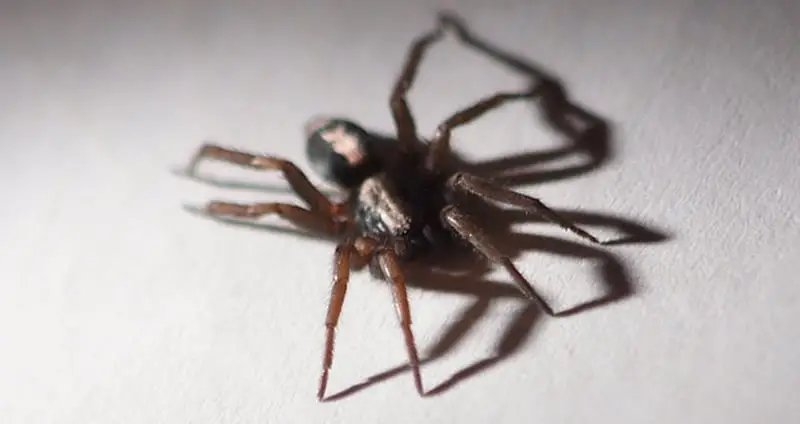
Parson Spider Spider Habitat
The Eastern Parson Spider, the more common of the two Parson Spiders, has made its home to the east of the Rocky Mountains. It’s been spotted in nearly every US state in that region, in addition to several areas in Canada.
No matter where in the world this spider lives, it exhibits the same behaviors. It spends most of its time hidden away in leaves or under bark, stones, or random debris. If it makes its way into a household, it hides away in dark areas with very low traffic, such as closets or garages.
During the night, the Parson Spider comes out of hiding to hunt. Since this is a hunting species, it roams around and hunts down its prey wherever it can find it. Because of this, it’s developed very fast, zigzag movements that make it hard to catch or kill.
Thus, it isn’t extremely common to see these spiders, but they are numerous and simply choose to hunt when there are the fewest predators about.
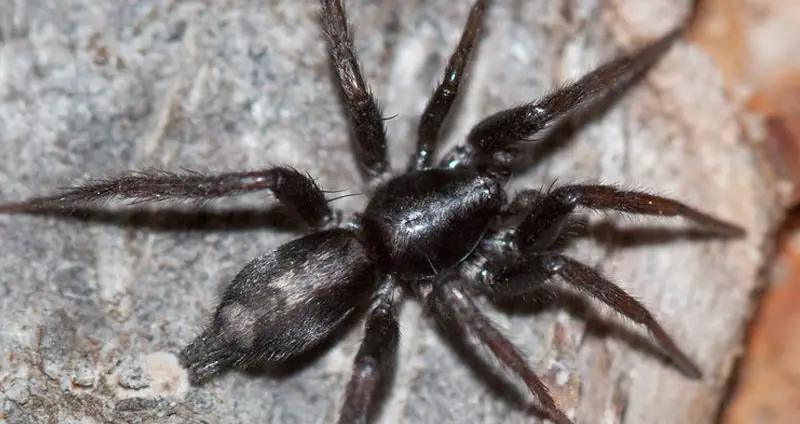
Parson Spider Bite & Venom
As mentioned above, this spider does not come out frequently during the day, so there aren’t many opportunities for you to run into one of these.
However, as they do hide away during the day, you may unintentionally run into one of them. You especially run the risk of getting bitten if you put on clothing that they’re hiding in. Fortunately, it isn’t a problem if you do get bitten.
A bite from a Parson Spider is slightly painful, and it does have the ability to cause an allergic reaction in some people, but it’s harmless for most people. It’s seen more of a nuisance than a danger.
It does use this bite to kill a wide variety of different household pests, though, so there are some people that see them as an effective pest control method.
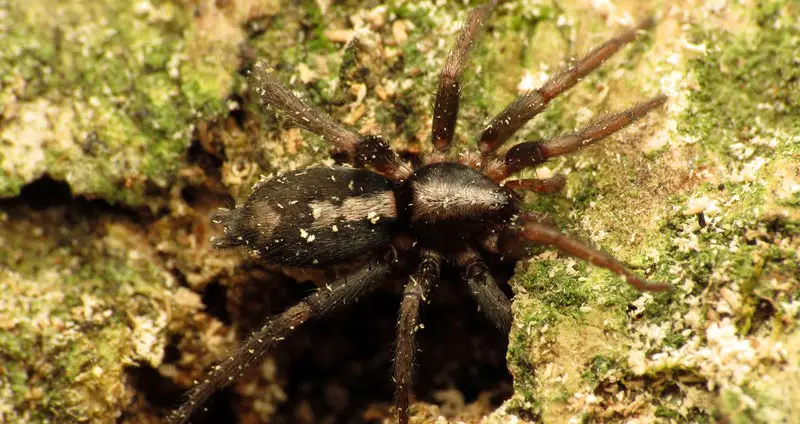
Parson Spider Eggs & Spiderlings
This species produces flat, disc-shaped egg cases that are deposited into silk-lined burrows. Females guard this egg case until it hatches, and they’re known to contain up to or around 130 spiderlings.
Mating and reproduction can occur throughout the year, especially since they’re present in so many different climates.
Random Parson Spider Facts
- As this is a hunting spider, they’re very rarely seen within webs.
- It’s very difficult to capture this spider as its movements are extremely quick and erratic.
- The Gnaphosidae family of spiders are called “ground spiders”, but the Parson Spider regularly climbs and stays above the ground.
- Despite the fact that the Eastern and Western Parson Spiders are essentially the same, the Eastern variant is usually the variant that’s referred to.

